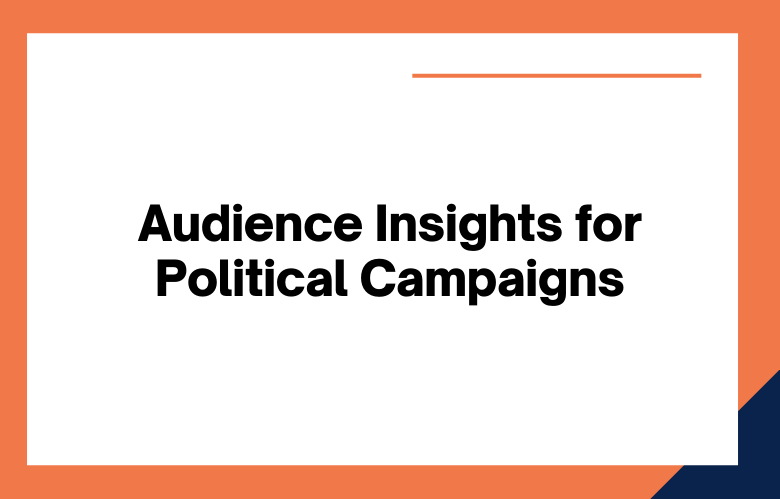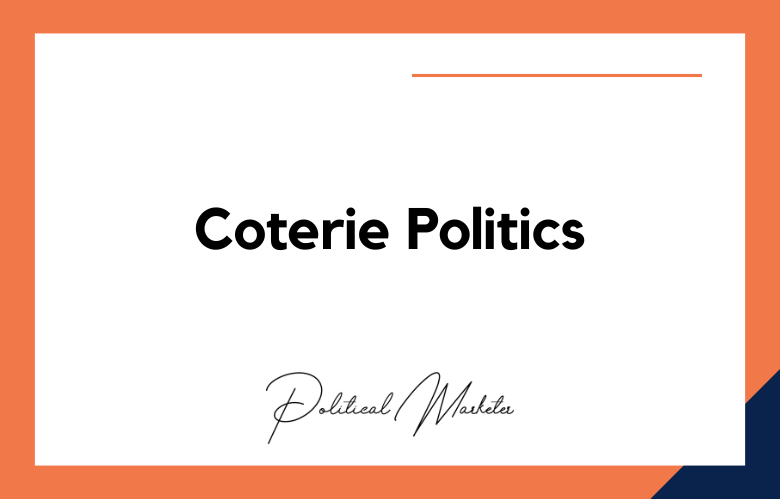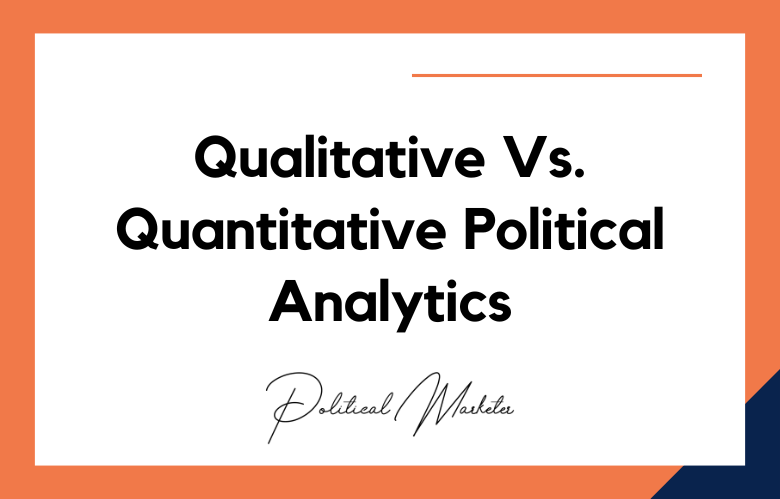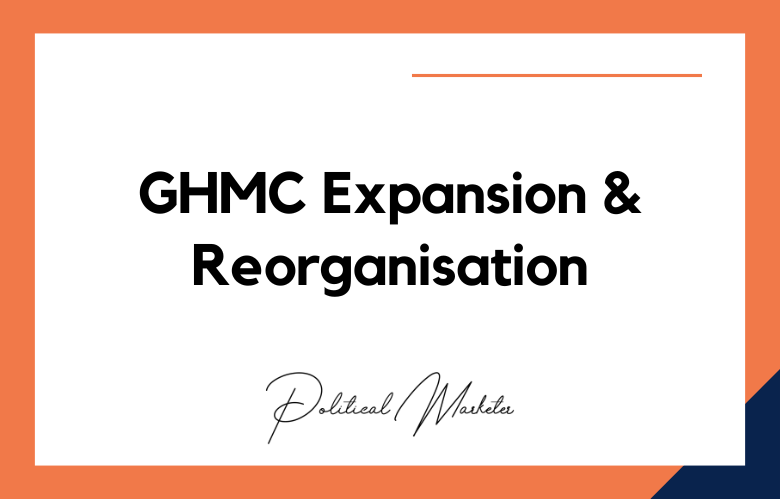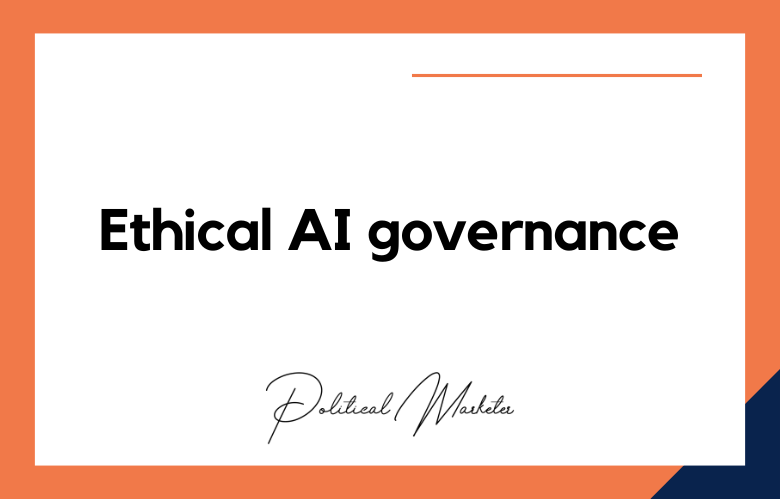Political campaigns constantly need new and innovative ways to target potential voters. We will explore the best strategies for targeting millennials and Gen Z based on audience insights from recent studies.
By understanding what makes these generations unique, you can create messaging and outreach strategies that resonate with them and increase your chances of success at the polls.
Understanding your audience’s insights and targeting them accordingly to win an election is essential. It applies to all audiences, especially millennials and Gen Z, who are influential and often challenging to reach.
We’ll provide some insights on how to target these two generations specifically. We’ll also share some of the best ways to reach them online and offline.
What are Audience Insights for Political Campaigns?
Audience insights are essential for political campaigns. They help determine their target audience and what messaging will resonate with them. This information can be used to create more effective campaign ads and messages.
Understanding your audience’s insights is critical when it comes to winning political campaigns. And that’s where Audience Insights comes in.
Audience Insights is about understanding your target voters, what matters to them, and how to reach them.
With the correct data, you can craft a winning political campaign that resonates with voters and gets them to the polls on election day.
Audience insights are critical for any political campaign. It’s impossible to craft a winning message without knowing who you’re trying to reach and what they care about. Luckily, plenty of tools and resources are available to help you get your information.
You need to know your audience’s insights if you’re running a political campaign. Luckily, Facebook has a tool that can help. Audience Insights for Political Campaigns lets you see critical information about the people engaged with your campaign.
It includes information like age, location, gender, interests, etc. With the data provided, you can better understand your supporters and are caring. Equipped with this knowledge, you can create more targeted content and strategies that resonate with your audience’s insights. So if you’re serious about winning your election, take advantage of this powerful tool.
How to Target Millennials and Gen Z for Political Campaigns
Millennials and Gen Z are critical demographics for politicians to target during their campaigns.
Understand their values and priorities. What matters to them? What drives their decisions?
Use social media platforms that they use most often. Instagram, Snapchat, and Twitter are popular among both groups.
Make your campaign ads creative and relatable. Use humor, stories, and animations to capture their attention.
Be authentic and transparent. These groups can see through inauthenticity and phoniness.
Use social media platforms like Snapchat and Instagram to reach potential voters.
Produce content that is shareable and informative but also engaging.
Remember that younger voters are more likely to respond to a candidate who seems relatable and trustworthy.
Appeal to their ideals:
Millennials and Gen Z are relatively liberal regarding their political views. Angle your campaign towards progressive policies that align with their values.
Make social media a priority:
Both millennials and Gen Z grew up with social media as a staple in their lives. Candidates should ensure a strong presence on Twitter, Instagram, and Snapchat.
Use social media platforms to reach out to young voters who spend most of their time online. Create targeted ads, post engaging content, and start conversations on issues that matter to them.
Be authentic:
This generation is pretty good at sniffing out bullshit. Candidates need to be honest and transparent if they want to win over.
Young people can mark inauthenticity a mile away, so make sure your campaign is true to your values. Be transparent about your policies and what you stand for.
Keep it relevant:
Ensure your campaign messaging is relevant to issues that matter to young voters. Millennial and Gen Z voters participate in social and environmental problems, so make sure your campaign addresses these topics.
To target millennials and Gen Z for political campaigns, consider using social media platforms like Snapchat and Instagram. Younger generations are more engaged with social media, so this is an excellent way to reach out to them.
Create content that appeals to young people’s interests, and make sure your campaign uses the latest technology. By doing this, you’ll be able to connect with millennials and Gen Z in a way that resonates with them.
How can political campaigns better target millennials and Gen Z?
One way to reach these demographics is by using social media platforms that are popular with them. Hashtags, influencers, and memes are all practical tools for engaging these voters. Campaigns can also host millennial and Gen Z audiences events, such as meetups, rallies, and Roundtable discussions.
Audience Insights for Political Campaigns Best Practices
- Survey your audience
- Determine the demographics and psychographics of your audience
- Find out what they care about most through social media and other sources
- Identify which issues resonate with them the most, then focus on these in campaign messaging
- Understand the target audience
- Engage with them on social media
- Create a message that resonates with their values
- Identify and address critical issues of concern to the target audience
- Do your research and know the demographics of your audience
- Use data to make decisions about how to reach out, who to target, and what messaging is most effective
- Know the issues that are important to your audience so you can speak their language
- Make sure all of your messages are on point with one another- if you’re discussing a new policy, don’t talk about old policies in the same communication
- Develop a clear and concise message that is easy to understand
- Use data to test your assumptions, focus on the best ways to reach voters, and target micro-targeted groups
- Engage with voters as much as possible to build trust
- Make sure the campaign focuses on a few critical issues for voters
- Develop clear and concise messages that resonate with your target audience
- Be mindful of how different segments of the population perceive you
- Tailor messaging to specific groups of people based on their demographics, beliefs, and values
- Consider the audience’s demographics and psychographics
- Determine what is most important to the audience
- Develop a campaign message that resonates with the audience and fits within their priorities.
- Create an emotional connection between your candidate and voters
- Find out what they care about
- Find out what they think of you and your competition
- Determine their needs and interests, including which issues are most important to them
- Create content that resonates with those values
- Conduct thorough audience research to understand demographics, interests, and behaviors.
- Create personas of your target audiences to establish empathy with them
- Use the right tone for your message- be passionate or conversational, depending on what’s best for the content you’re creating
- Know who you’re targeting- young people or seniors? Men or women? What are their political leanings?
- Survey to find out what your audience wants
- Please find out the most influential person in your audience and get their endorsement.
- Create an image gallery of your team members, including family members and friends, with captions about why they support you.
- Collect endorsements from other politicians or influencers in the field similar to you.
- Make videos showing yourself speaking passionately about topics relevant to your campaign.
- Create a content strategy that includes video, text, graphics, and data
- Be creative in how you use social media to target different audiences
- Develop an effective branding campaign with logos and slogans
- Use the proper voice accent for each platform- be conversational on Twitter and Facebook but more formal on LinkedIn or Instagram.
Conclusion:
Successful political campaigns need to reach out to millennials and Gen Z voters.
The key is understanding what makes these generations unique and how they consume information.
Luckily, our team at Insights has years of experience researching both generations and can help your campaign target them effectively.
Contact us today for a lot of information about our Audience Insights services for political campaigns!
One way to get in touch is by filling out our online form on this site or give us a call at
+91 9848321284. Let’s work together today!
Audience Insights for Political Campaigns: How to Target Millennials and Gen Z – FAQs
What Are Audience Insights In Political Campaigns?
Audience insights involve analyzing voter characteristics such as demographics, behaviors, and interests to better understand and engage specific voter groups.
Why Are Audience Insights Important For Campaigns?
They enable targeted messaging, efficient resource allocation, and improved voter engagement by aligning campaign strategies with audience preferences.
What Types Of Insights Can Campaigns Gather?
Insights include demographic (age, gender, location), behavioral (online activity, past voting), psychographic (values, interests), and issue-based preferences.
How Do Campaigns Collect Audience Data?
Data is collected through voter files, social media analytics, polling, surveys, event sign-ups, and third-party data providers.
What Role Does Social Media Play In Gathering Insights?
Social platforms offer real-time feedback on messaging, sentiment, engagement patterns, and content effectiveness.
How Does Behavioral Targeting Work With Insights?
By tracking online behavior such as searches, clicks, and follows, campaigns can segment audiences and tailor specific messages.
What Is Psychographic Segmentation?
It classifies voters based on values, beliefs, lifestyles, and interests, enabling emotionally resonant messaging.
Can AI Enhance Audience Insights?
Yes, AI and generative models can analyze vast datasets to identify patterns, predict preferences, and generate personalized messages.
What Tools Aid In Audience Insight Generation?
Campaigns use analytics platforms, CRM systems, social listening tools, and AI-based segmentation software.
How Do You Measure Sentiment?
Sentiment analysis using NLP tools evaluates public tone and perception within social media posts and comments.
Why Combine Traditional And Digital Data?
Integrating offline voter files with online behavior data offers a more complete view of voter motivations.
What Is Geo-Targeting In Audience Insights?
It analyzes voter data by location to customize outreach based on regional sentiment and demographics.
How Does A Campaign Use These Insights?
Campaigns segment audiences, craft tailored messaging, optimize ad spending, and refine outreach channels.
Are Audience Insights Useful For Crisis Response?
Yes, they help identify emerging concerns or misinformation so campaigns can quickly address them.
Can Small Campaigns Use Audience Insights?
Absolutely. Cloud-based analytics and social tools make insights accessible even to small-scale campaigns.
What Ethical Concerns Should Campaigns Consider?
Campaigns should consider privacy, data consent, transparency in targeting methods, and avoiding manipulative messaging.
How Often Should Audience Insights Be Updated?
Daily or weekly updates ensure campaign messaging adapts to shifting sentiment and events.
What Metrics Show Campaign Success With Audience Insights?
Metrics include engagement rates, conversion rates (e.g., sign-ups, donations), sentiment improvement, and target voter outreach.
How Can AI Segment Audiences In Real Time?
AI-driven segmentation can dynamically regroup audiences based on new patterns in behavior or sentiment.
What’s The Role Of Feedback Loops In Insights?
Real-time feedback from voters via polls or social interaction helps campaigns refine messaging continuously.

